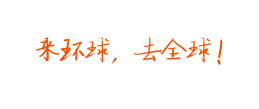

欢迎来到环球教育官方网站,来环球,去全球,名师高徒,高分留学!
来源: 环球教育深圳分校
小编:蔡能鑫 1138假如想了解雅思阅读文章的来源,根据剑桥雅思真题的致谢页,来进行推断是其中一个可行的方法。以下是剑桥12和11的一些文章,以及它们的选题源。
| 剑桥 12 | |
剑十二文章标题 | 杂志名称 |
1.Staying Power (Test 5,Passage 1) | Geographical Magazine (2013) |
2.Finding the Lost City (Test 6, Passage 2) | Geographical Magazine (2011) |
3.Flying Tortoises (Test 7,Passage 1) | Geographical Magazine (2012) |
4.The Neuroscience of Music (Test 7,Passage 3) | Wired Magazine (2012) |
5.It's Time for Better Boards (Test 8,Passage 3) | Management Today (2013) |
剩余的文章,来源于网络文章或者书籍节选:
1.Moral Moments: Unprincipled Principles
(Test 5 Passage 3)
2.The Future of Agriculture: Synthesis of an Online Debate
(Test 6 Passage 1)
3.The Cognitive Benefits of being Bilingual
(Test 6 Passage 3)
4.History of Glass
(Test 8 Passage 1)
5. Bring back the Big Cats: Is it Time to Start Rewilding Britain?
(Test 8 Passage 2)
6. The Intersection of Health Sciences and Geograph
(Test 7 Passage 2)
| 剑桥 11 | |
| 剑十一文章标题 | 杂志名称 |
| 1.Reducing the Effects of Climate Change (Test 1 Passage 3) | Geographical Magazine (November, 2009) |
2. Neuroaesthetics (Test 2 Passage 3) | New Scientist (July, 2012) |
3. Animal Migration (Test 3 Passage 2) | National Geographic Magazine (November, 2010) |
4. A Thing or Two about Twins (Test 4 Passage 1) | National Geographic Magazine (January, 2012) |
剩余的文章,同样来源于网络文章或者书籍节选
1.Introduction to Film Sound
(Test 4 Passage 2)
2. The Unfolding of Language
(Test 4 Passage 3)
3. The Vertical Farm
(Test 1 Passage 1)
4. The Falkirk Wheel
(Test 1 Passage 2)
5. A Short History of Silk in China
(Test 3 Passage 1)
6. If only they Could Talk
(Test 2 Passage 2)
可以看出,每年的文章节选来自的杂志是有所不同的。不过,近两年地理类杂志是最热门的候选,例如National Geographic 和 Geographical Magazine 就分别有超过三篇文章入选。其余的就相对分散。有科技类杂志,如New Scientist,一直每年都有文章入选。有管理类杂志Management Today, 有书籍和网络文章等等。热门杂志Economist, History, Times 等文章,最近却没有入选,和通常的刻板印象有所不同。此前,各本剑桥选编的文章分别是:剑八中,选用了The Guardian ,Focus Magazine, The Times;剑七中,选用了Scientific American, Educating Psyche, The Economist, New Scientist, Sydney Morning Herald等;剑六,New Scientist, The Economist, Scientific American等;剑五中则有The Economist, New Scientist, American Scientist
文章是不是原文的全部摘录呢?
并不是的。在进行出题的时候,文章,或者由于字数超出500,或者其他不可言说的原因,删减了,改编到两面的范围内。因此,市面上流通的机经,通常有三面,那是未经删减的文章。往往读起来,要比正常剑桥真题的文章耗时长,也就是这个原因。
举剑桥真题11, Text 2, Passage 3 这篇文章为例。它的名字是Get the picture? Art in the brain of the beholder,原本为杂志New Scientist,2012年6月的一篇文章,作者为Kat Austen,大约2500字左右。而雅思阅读中,把这篇文章删减成了,只有500字左右的文章。
原文一共分四个部分:General introduction(7段), Chimp or Rothko(5段), Mind Games(6段)和Art imitating life(5段),共23段。而阅读考试只留了9段。比如,第一部分中的7段,就删除了前4段,然后把5,6,7或合并,或改写成了阅读正文的第一段,第二段。而文章的第三段,则来自原文第二部分的第二段的改写。
由此可见,其实原文的行文和论证,要比雅思阅读复杂和充实得多。